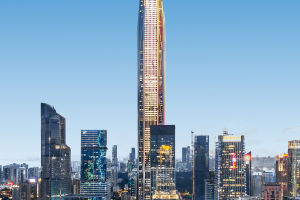Beauty Of Namibia
The Old German-style towns in southern Namibia are a unique and fascinating part of the country's history and culture.
These towns, which were established during the late 19th and early 20th centuries, reflect the architectural styles and urban planning principles of Germany at the time.
Today, they offer visitors a glimpse into the past and a chance to experience a different side of Namibia.
One of the most famous Old German-style towns in southern Namibia is Lüderitz. Founded in 1883, Lüderitz is located on the coast and was initially established as a trading post for guano and other commodities. As the town grew, German settlers began to arrive and established several businesses, including a diamond mining operation that helped to make the town prosperous.
Today, visitors to Lüderitz can explore the town's historic buildings, including the Art Nouveau Goerke Haus, the Felsenkirche. and the Goerke Haus Museum, which provides a glimpse into the life of a German family living in Namibia during the early 20th century.
Another notable Old German-style town in southern Namibia is Swakopmund. Founded in 1892, Swakopmund is located on the coast and was established as a port for the German colony of South West Africa
The town features some buildings that reflect the German architectural style, including the Swakopmund Railway Station, the Altes Gefängnis (Old Prison), and the Hohenzollern Building. Visitors to Swakopmund can also explore the town's historic jetty, which was built in 1905 and is now a popular spot for fishing and watching the sunset.
Further inland, the town of Windhoek also has several Old German-style buildings. Although Windhoek was not founded until 1890, it became the capital of German South West Africa in 1892 and served as the center of German administration.
Today, visitors to Windhoek can explore some historic buildings, including the Alte Feste (Old Fortress), which was built in the late 19th century and now houses the National Museum of Namibia, and the Christuskirch, which was built in the early 20th century and is one of the city's most recognizable landmarks.
One of the interesting things about the Old German-style towns in southern Namibia is that they reflect not only German architecture but also a blend of German and African cultural influences. For example, the Lüderitz waterfront features colorful houses that are typical of traditional Cape Dutch architecture, which was adapted to suit the local climate.
Similarly, the Alte Feste in Windhoek is built from local sandstone and features African-inspired decorative elements, such as stylized animal motifs.
Visiting the Old German-style towns in southern Namibia is a great way to learn more about the country's history and culture. In addition to exploring the historic buildings and landmarks, visitors can also learn about the impact of German colonialism on Namibia and its people.
For example, the period was marked by forced labor, land seizures, and other injustices that continue to affect Namibia's social and economic landscape today.
Despite these challenges, however, the Old German-style towns in southern Namibia remain an important part of the country's heritage. They offer a unique glimpse into the past and provide a tangible link to a time when Namibia was under German rule. For visitors interested in history, architecture, or culture, these towns are worth a visit.


